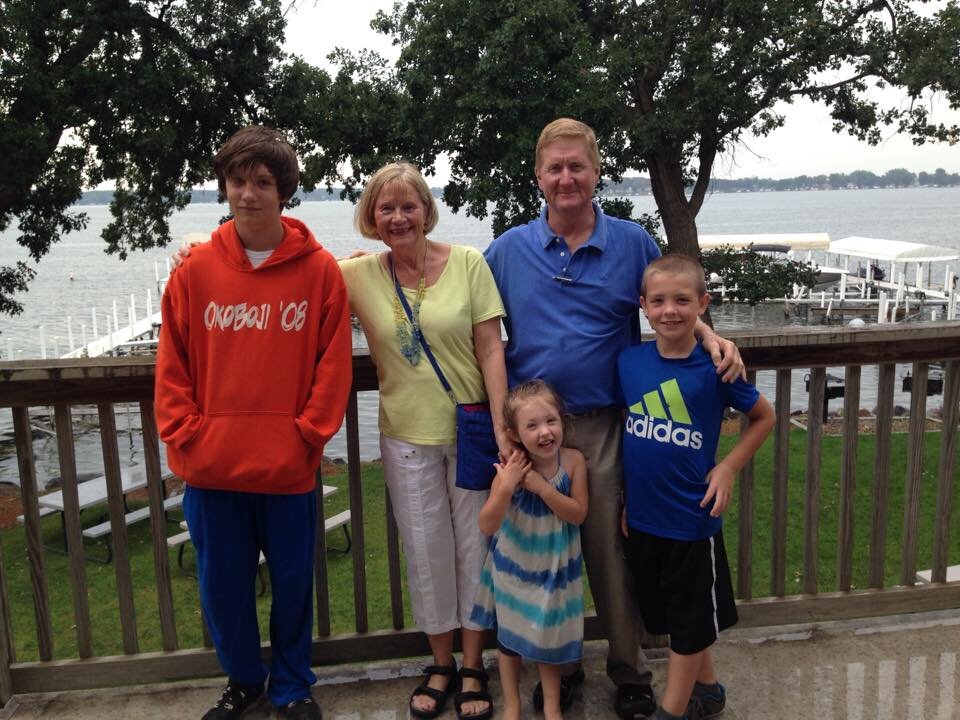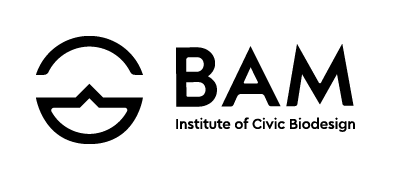
Beverly Ann Miller Foundation.
Introduction
We live along a new frontier. On the cusp of the Fourth Industrial Revolution, we humans are responsible for an explosion in knowledge, technology, and productivity. We are also responsible for tremendous disruptions to society and the environment. These changes are profound, and, sadly, the upcoming generation is not being prepared to address them. Perhaps not since the latter half of the 19th century, the generation of the pioneers, has there been so daunting a challenge. Will a new group like them rise up, summoning the best resources and crossing into the next frontier?
A new type of leader is being called forth in the Great Plains region by a new educational group: the BAM Foundation. Following the inspiration of Beverly Ann Miller, the BAM Foundation will raise up leaders of all ages to take on the most pressing challenges of the area. The foundation launched a new school for adult learners, the BAM Institute. There, adaptive students will test and deploy innovative strategies that bring about regenerative culture in their local communities.
An age of unprecedented change calls for unprecedented shifts in the way education is conducted. The BAM Foundation will lean into these shifts:
From disciplinary specialization to whole systems thinking
From quarantined classrooms to immersive learning environments
From the safety of pre-established answers to the risk of adaptive experimentation
From theoretical assignments to civically engaged projects
The Institute will tap into the best practices of emerging pedagogies to make sure students succeed as today’s leaders.
A phrase one hears regularly with BAM is civic biodesign. The term is pregnant with meaning. Why “civic”? The word connotes an education done in the community for the sake of the community. Education is a local endeavor maximizing the power of local communities. It is also an education-oriented toward solving a community’s most pressing problems and future challenges. Why “biodesign”? Here, BAM envisions an intersection between the knowledge from biological systems (“bio”) and the creativity of human-centered systems (“design”). Biodesign is future-leaning, where the lines are blurred between the arts and sciences, between the humanities and trades. In biodesign one finds the collision of new science, new thinking, new materials, new initiatives, and new organizational structures, all interacting through whole systems thinking.
The kind of projects Civic Biodesign students may undertake sound like science fiction, but they are not. The following are actual projects going on today around the world:
Housing built from bricks made out of fungus-based concrete
Micro-prairies cultivated in the middle of the city
Robots sorting through recycled plastics according to polymer, color, shape and size
Captured mineral runoff sold back to farmers
Schools supplied with citrus grown in northern latitudes
Containers manufactured out of corn husks
Production of inexpensive insulin from yeast cultures
Use of drones for targeted micro-applications of pesticides
Pools heated with solar panels and a compost pile
Water sanitation achieved through nano-silver treated paper
No-till organic farming done through cover crops
Fabrics made from bacterial cultures and grass roots
Insulation panels made from compressed hemp
Algae used for in-home air filtration
Food forests cultivated on small acreages
Programming bacteria to create sculpture
Safe neighborhoods through nature-inspired traffic calming designs
Studying city growth through mold behavior
Liquid dynamics as a model for democratic governance
In Civic Biodesign the applied sciences meet community development. It is an emerging field, not yet fully defined. Yet BAM sees Civic Biodesign as the most promising access point for those willing to enter the new frontier.
The vision for the our students is bold:
We envision the world’s best and brightest system-thinkers getting their hands dirty on farms cultivating a new ag economy.
We envision students turning their communities into laboratories through regenerative practices.
We envision students ecologically restoring watersheds, forests, and prairie lands.
We envision students designing and building open-source machines that can be constructed like legos, bypassing engineered obsolescence.
We envision students not only developing affordable means for healthcare and increasing the overall quality of life but studying and applying biodesign towards collective public health.
We envision students developing new materials to be used in locally manufactured products.
We envision students collaborating with landowners to create prototype farms where regenerative farming practices can be tested and scaled.
We envision students collaborating with real estate developers to not only study but build human-centered neighborhood blocks.
We envision students partnering with area manufacturers to prototype housing made from organic materials, like fungus-based bricks and hemp SIPS panels.
We envision students crafting public policy through a whole-system lens, one that sees the interconnections and interdependencies that exist in society.
Most of all, we envision students being active participants in changing the world for the better.
Sioux Falls will be the initial hub city for BAM programming, including the BAM Institute. Why Sioux Falls? Besides it being Beverly Ann Miller’s city, Sioux Falls has an unfair advantage. It is a national epicenter for human-animal-plant science, medicine, finance, and nonprofits. It is known for its booming economy and cooperative ethos. It also faces conditions that are ripe for dramatic change. Sioux Falls sits in the middle of an unhealthy watershed, bisected by the 13th dirtiest river in America. It has connections to hundreds of rural communities and has access to struggling agricultural zones. Sioux Falls is a natural hub to work out innovative, regenerative practices, applying them in a range of rural and urban environments.
A generation of new leaders is needed. In the coming years, the BAM Foundation will inspire youth to take up the challenge. It will also birth a learning institute unlike anything seen in the Great Plains. Using the best of emerging educational practices, the BAM Institute of Civic Biodesign will raise up leaders to tackle the pressing local issues – and thereby lead the way into the future. A new generation of Great Plains residents can leave their homes and communities in much better shape than they found them. Indeed, if the vision is fulfilled, men and women from the so-called “flyover country” will be at the forefront of overcoming the largest challenges global humanity faces. Great Plains students deserve to be informed, empowered, and mentored in their efforts to do so. Our communities will flourish when they succeed.
History
On October 24, 2019, Sioux Falls lost a pillar of the community. Beverly Ann Miller, an educator, nurse, and philanthropist, had lived 70 years of remarkable gratitude and joy. Bev (as she was known) was passionate about giving young people a fair shake, providing access to students who didn't fit the typical educational model. Now others were left to wrestle with what it meant to carry on her legacy. Les Miller, her husband of 44 years, was processing this question with great intentionality. Shortly after the funeral he gathered a group of community leaders around his dinner table to discuss the future of education. Clint Brown, Nathan Hitchcock, Jordan Deffenbaugh and Corey Johnson (among others) began sharing the most important emerging trends in their respective fields. Joined to Les's background in sustainable farming, a term rose to the surface: civic biodesign. Bev's passing would prove to be the catalyst for a big plan. In the weeks and months to follow, a daring vision emerged for the Beverly Ann Miller (BAM) Foundation. At the heart of that vision was the BAM Institute.
Fifty years before those crucial conversations around his dinner table, Les Miller had a revelation. A farm kid from small town South Dakota, Les experienced a paradigm shift in the Black Hills. Hiking with Dr. Sven Froiland in a creek near Deerfield Lake, he came across a water ouzel feeding on the bottom of the creek. His professor explained that the bird’s life was tied entirely to the health of the stream. Something clicked in Les’s head. He was seeing firsthand the interrelatedness of things. Shortly afterward he began studying soil, and came to find that a typical acre contains 7,000 pounds of living creatures in a single foot of topsoil. Les took that consciousness into his career, where he facilitated land sales and promoted regenerative farming. And there around the Miller dinner table in 2019 he shared his dream: communities working with the land, not fighting against it.
Other civic leaders joined around the table to offer their wisdom, and in early 2020 a plan was laid out to pilot elements of BAM, including the BAM Institute. The men and women who gathered around the Miller dinner table had a common feeling: that this unlikely crosshatch of people was the right team at the right time at the right place. An educational organization with exponential possibilities was being born.

“If you want to teach people a new way of thinking, don't bother trying to teach them. Instead, give them a tool, the use of which will lead to new ways of thinking.”
― Richard Buckminster Fuller
The Need
Economic
The Great Plains needs a new economic partner from the educational world. As the global economy shifts, the upper Midwest stands to see the largest shift in farming crops, livestock, and practices since the Dust Bowl. While research universities provide valuable studies, more help is needed in connecting local businesses with students who are trying out new, nimble solutions. Moreover, local businesses are hungry, even desperate, for employees who are capable of high performance and institutional leadership.
Ecological
The Great Plains needs a school that can champion regenerative practices. Agriculturally, the Great Plains suffers from profound mishandling of natural resources. Driven by short-sighted (and often government-funded) incentives, the upper Midwest suffers from soil degradation, erosion, water contamination, carbon release, and unsustainable development. Urban and suburban zones also are contributing to ecological imbalance. While global options for new, regenerative practices are coming forward at a torrid pace, rural and urban populations in the Great Plains are not learning about or adopting them in a timely manner. Because locals are not participants in the breakthrough environmental efforts, environmental stewardship is seen with suspicion, too much associated with overweening regulatory interference. What is needed, then, is greater awareness, ownership, and local experimentation.
Community
The Great Plains needs forums for innovation. While people of the upper Midwest tend to be hardy and independent, they look to mediating organizations to facilitate cooperation. Even Sioux Falls and other medium density towns experience brain drain as their best talent moves away to more dynamic cities. The area is in need of communities that can retain and attract talent, businesses, and other organizations. Ultimately, Great Plains communities need to come together to work on common problems in enter the need for the BAM Foundation, particularly the BAM Institute, falls into four categories: educational, economic, ecological, and community.
Educational
The Great Plains area needs a new educational avenue. It is well supplied with traditional forms of higher education, with various state universities, private universities, community colleges, and tech schools. It does not, however, have many alternatives. Students looking for highly integrative learning in an immersive environment are hard pressed to find programs. Adult learners looking to complete a degree or do graduate work regularly find themselves stifled by course offerings that are bound by rigid residency requirements and deadlines. Traditional programs, for all their strengths, do not tend to promote whole systems thinking or get at real-time community problems. Learners hungry to make a difference immediately often feel thwarted by the traditional modes. Online delivery has not changed the limitations of educational offerings, which are almost always time-based, sequential, and fundamentally removed from the real world.
The Solution
The BAM Foundation, particularly in its expression of the BAM Institute, brings a much-needed approach to the Great Plains. BAM programming addresses the needs of the area in educational, economic, ecological and communal ways.
Educational
BAM supplies a fresh approach to education. All BAM programming offers highly integrative learning in civic biodesign in an immersive environment. The Institute curriculum in particular fuses together three powerful modes:
project-based, in which learning is done through relevant projects in hands-on environments
competency-based, in which educational progress is measured in terms of demonstrated proficiency
network-based, in which the learner taps into a personal network for supervision.
The educational mode of the Institute matches the unique crosshatch of content. The mode also offers an approach ideal for adult learners and non-traditional students:
Contextualized, relevant learning
Flexible timing
Flexible pathways
Transparent expectations
Clear, relevant certifications
In sum, the BAM Institute of Civic Biodesign will offer student-centric learning opportunities that empowers students to provide holistic leadership in their communities.
Economic
BAM programming, with the Institute of Civic Biodesign at the fore, will become an important economic partner for the region. Its integrative, on-the-ground learning will result in new solutions and expressions for businesses. Farmers and ranchers have much to gain from the biodesign projects. So do small towns and cities, for whom social issues and environmental conditions are tied intimately to economic health. (By way of example, a healthier Big Sioux River would mean, beyond higher yields, reductions in clean-up costs, increased recreational business, and higher property values.) Additionally, the BAM Institute will produce hundred of employees equipped to lead local businesses in high-impact change.
Ecological
Virtually all BAM programming will interact with ecological issues. By educating through fieldwork and tackling bio-related problems, BAM will spur environmental awareness, ownership, and local experimentation. The Biodesign Institute’s curriculum is organized the Eight Dimensions of Wellness applied at 8 Scales of Humanity. Communities in the Great Plains will begin to implement regenerative, whole-system practices in areas such as soil health, water purity, waste management, erosion mitigation, carbon sequestration, and optimized use of local resources. BAM students will understand how to achieve ecological outcomes by working with a range of stakeholders in the community.
Community
BAM meets the needs of the community by providing unique, locally relevant content. Just as importantly, BAM programming brings back the forum, that is spaces in which students collide with the public. The network-based approach ensures that learners will interface with more than just institutional instructors and coaches. Rather, for every project and for many competencies students will interact with local business owners, managers, policymakers, social influencers, and other community leaders. Communities benefit from better awareness of issues, increased networking, and retention of talent.
Impact
The BAM Foundation, with the Institute of Civic Biodesign at its heart, will impact the Great Plains culture in a number of profound ways. It will establish a culture of innovation that extends beyond the student body and into the communities they inhabit. BAM’s work is to raise up students who are whole versions of themselves, who in turn lead communities into wholeness.
Educational
The BAM Institute of Civic Biodesign will be a new higher education option built upon a synergy of thinking and doing. A student comes with curiosities and visions for the future and leaves with a deeper understanding of big challenges and the skills needed to act. They will also develop a global awareness to accelerate the innovation process of local, applied solutions. This will be accomplished with better pedagogies and training paradigms that tailor to the needs and abilities of each student to allow them to become a better version of themselves and an essential species of a workforce ecosystem, not just a replaceable cog in the machine of society.
Economic
There are many unknowns in the coming 4th Industrial Revolution. The Institute will guide communities through this new territory, by aiding in cultivating the soil to grow new businesses and industries utilizing an existing population and resources through workforce development and economic gardening. Of course, profit is only a piece of the puzzle. New businesses will need to find the balance between the need for profitable business and ecological health.
Ecological
The exploration of regenerative practices and ecological restoration to ease the effect of ecosystem breakdown will be a core action that every project engages. Each action must be conscious and holistic, taking into account that challenges are complex, not simply complicated.
Communal
We will engage 15 students in the first year and triple that number every subsequent year for the foreseeable future. These students will have a pathway to regenerate rural economies and expand opportunities for urban connections. Acting as a bridge across multiple industries by breaking down silos and spurring emergent thought, the institute will connect students with different industry professionals through the strategic use of mentors in network-based supervision. Consequently, the work of the BAM Foundation will promote dynamic communities that attract new talent, businesses, and institutions to the region.


